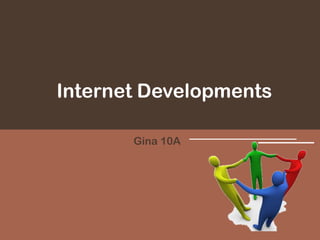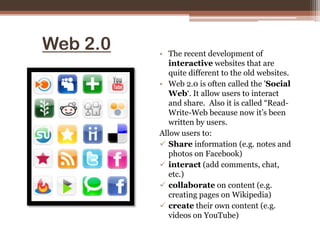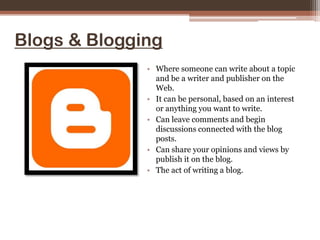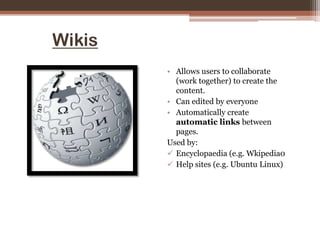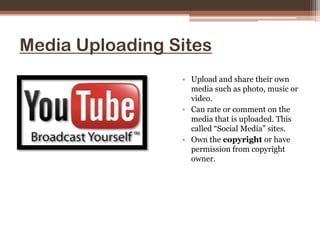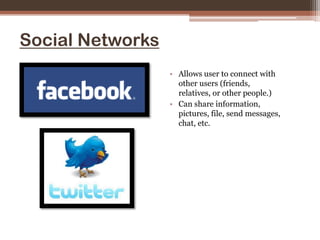Internet developments
- 2. Web 2.0The recent development of interactive websites that are quite different to the old websites. Web 2.0 is often called the 'Social Webâ. It allow users to interact and share. Also it is called âRead-Write-Web because now itâs been written by users.Allow users to:Share information(e.g. notes and photos on Facebook)
- 3. interact (add comments, chat, etc.)
- 4. collaborate on content (e.g. creating pages on Wikipedia)
- 5. create their own content (e.g. videos on YouTube)Blogs & BloggingWhere someone can write about a topic and be a writer and publisher on the Web.It can be personal, based on an interest or anything you want to write.Can leave comments and begin discussions connected with the blog posts.Can share your opinions and views by publish it on the blog.The act of writing a blog.
- 6. WikisAllows users to collaborate (work together) to create the content.Can edited by everyoneAutomatically create automatic links between pages.Used by: Encyclopaedia (e.g. Wkipedia0
- 7. Help sites (e.g. Ubuntu Linux)Media Uploading SitesUpload and share their own media such as photo, music or video.Can rate or comment on the media that is uploaded. This called âSocial Mediaâ sites.Own the copyright or have permission from copyright owner.
- 8. Social NetworksAllows user to connect with other users (friends, relatives, or other people.)Can share information, pictures, file, send messages, chat, etc.
